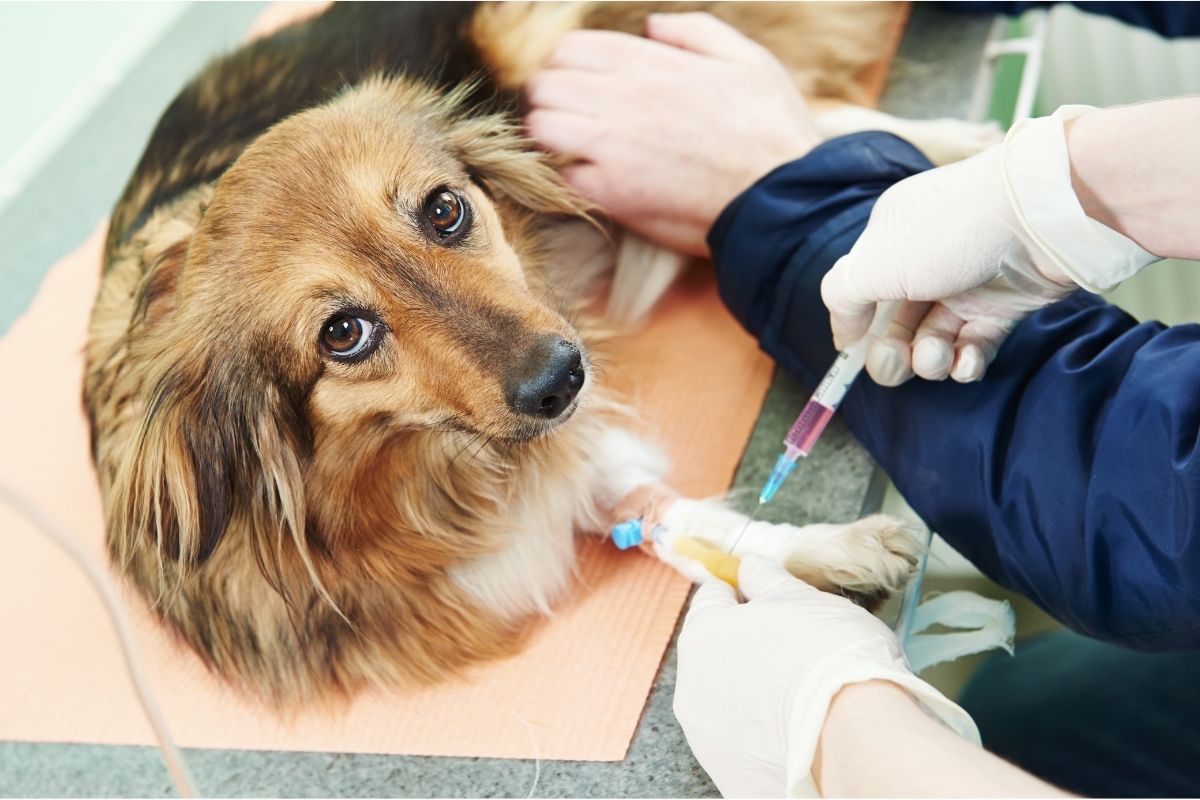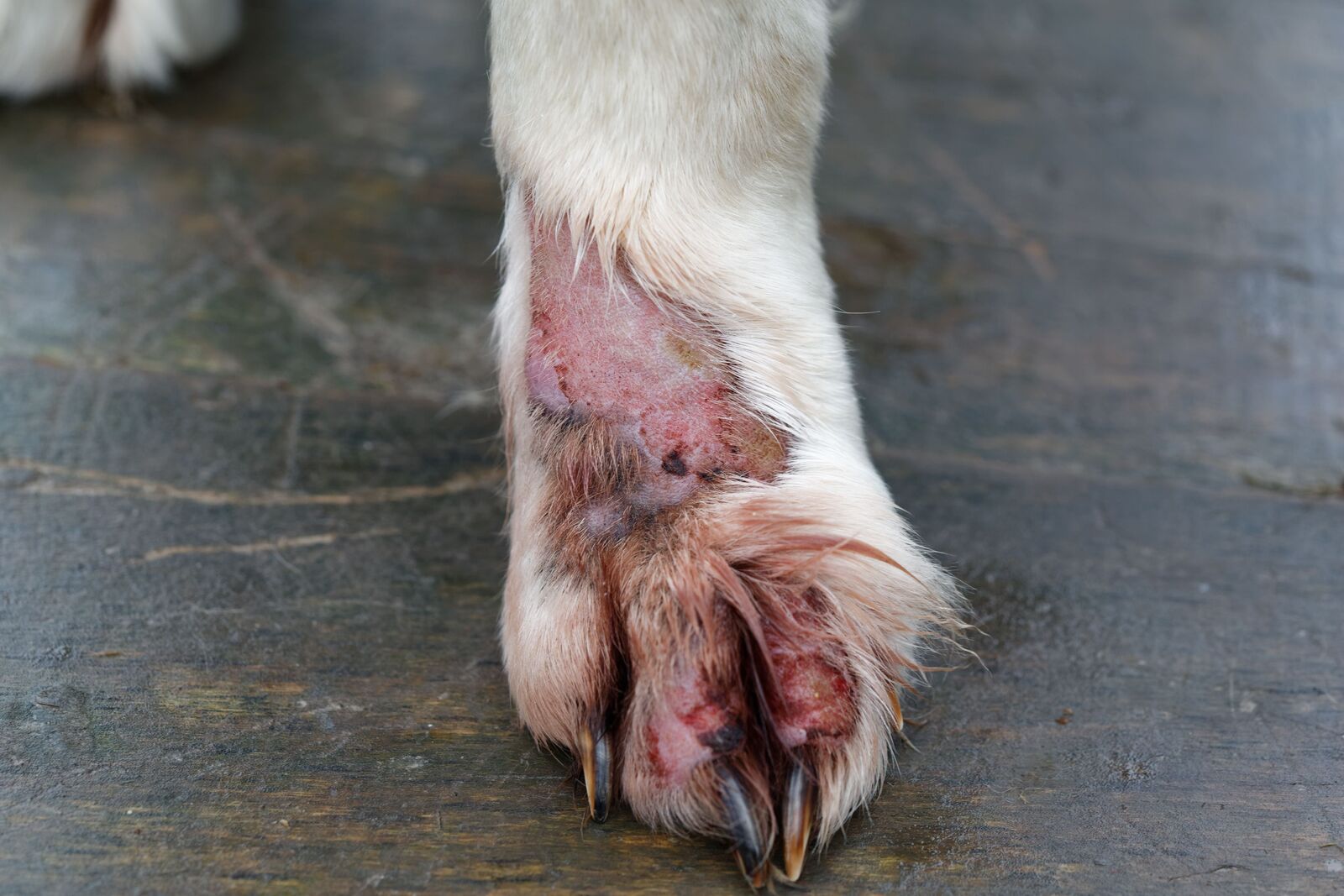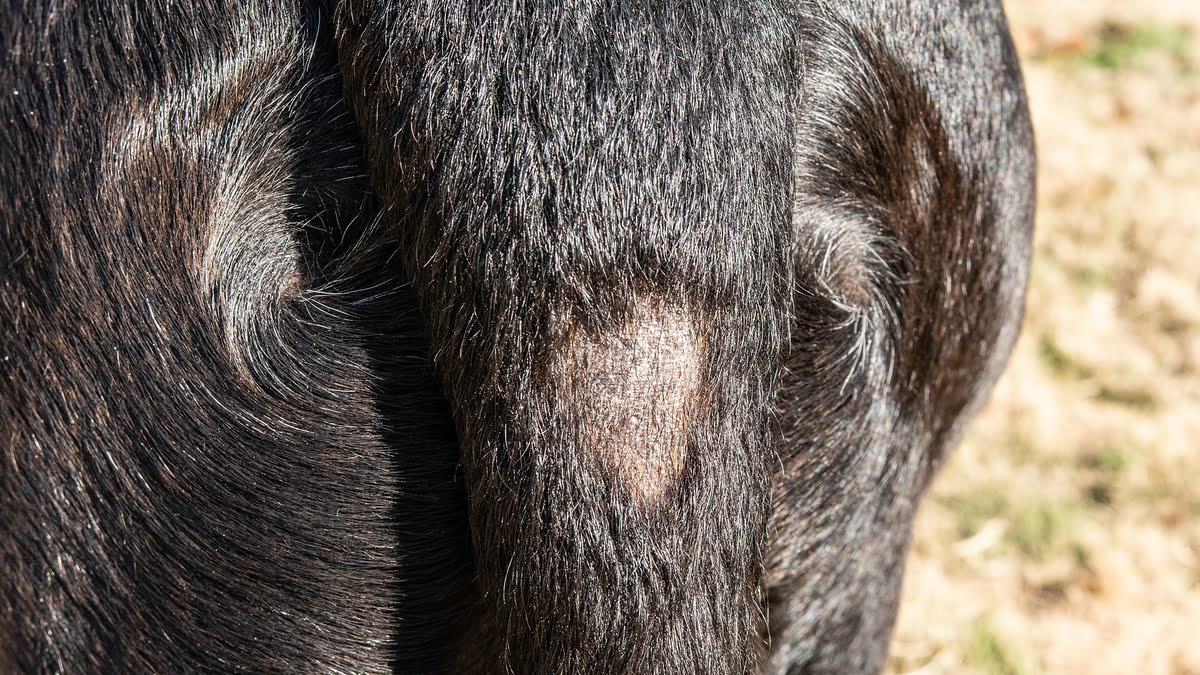Home>Health & Wellness>Common Health Issues>What Parasite Is Found In Dog Feces


Common Health Issues
What Parasite Is Found In Dog Feces
Published: February 7, 2024
Learn about common health issues related to dog feces, including the risk of parasite transmission and how to protect yourself and your pets. Understand the importance of proper hygiene and preventive measures.
(Many of the links in this article redirect to a specific reviewed product. Your purchase of these products through affiliate links helps to generate commission for Pawsomeoldies.com, at no extra cost. Learn more)
Table of Contents
Introduction
Parasites found in dog feces can pose significant health risks to both pets and humans. One of the most common parasites found in dog feces is the roundworm, scientifically known as Toxocara canis. These parasites are prevalent in puppies and adult dogs, and their eggs can survive in the environment for extended periods, making them a persistent threat to public health.
Understanding the potential dangers associated with these parasites is crucial for pet owners and the general public. By gaining insight into the nature of these parasites and the health risks they pose, individuals can take proactive measures to safeguard themselves and their pets from potential harm.
In the following sections, we will delve into the characteristics of the parasite found in dog feces, explore the health risks associated with exposure to these parasites, and discuss preventive measures and treatment options. By shedding light on these important aspects, we aim to equip readers with the knowledge needed to mitigate the risks and protect the well-being of both humans and their beloved canine companions.
Read more: Where Are American Dog Ticks Found?
Understanding the parasite found in dog feces
The parasite commonly found in dog feces is the roundworm, scientifically known as Toxocara canis. These intestinal parasites are prevalent in puppies and adult dogs, posing a significant health risk to both animals and humans. Toxocara canis is a type of roundworm that primarily infects dogs but can also affect other animals, including humans.
The life cycle of Toxocara canis begins with adult worms residing in the small intestine of infected dogs, where they produce eggs that are then excreted in the feces. Once in the environment, these eggs become infective after a period of incubation, typically 2-4 weeks. This means that any area contaminated with infected dog feces, such as parks, playgrounds, and yards, can harbor these resilient eggs, posing a risk of transmission to other animals and humans.
When a dog ingests infective Toxocara canis eggs, the eggs hatch into larvae in the dog's small intestine and then migrate through the body, potentially causing damage to various organs. In pregnant dogs, the larvae can also be transmitted to the unborn puppies, contributing to the perpetuation of the parasite within the canine population.
Humans can become infected with Toxocara canis through accidental ingestion of infective eggs, often due to poor hygiene practices or close contact with contaminated soil or surfaces. This can occur when individuals, particularly young children, play in areas where infected dog feces are present and inadvertently ingest the microscopic eggs. Once ingested, the larvae can migrate through the body, causing a condition known as visceral larva migrans, which can lead to a range of symptoms and potential complications.
Understanding the life cycle and transmission of Toxocara canis is crucial for pet owners and the general public. By recognizing the potential sources of infection and the pathways of transmission, individuals can take proactive measures to minimize the risk of exposure to these harmful parasites. Moreover, raising awareness about the prevalence and impact of these parasites can foster a greater sense of responsibility among pet owners, encouraging them to prioritize preventive measures and regular deworming for their canine companions.
Health risks associated with the parasite
Exposure to the parasite found in dog feces, particularly Toxocara canis, can pose significant health risks to both animals and humans. When humans inadvertently ingest the infective eggs of these parasites, either through direct contact with contaminated soil or surfaces or by consuming unwashed fruits or vegetables grown in contaminated soil, it can lead to a condition known as visceral larva migrans (VLM). This condition occurs when the larvae migrate through the body, potentially causing damage to various organs and tissues.
In cases of VLM, individuals, especially young children, may experience a range of symptoms, including fever, cough, wheezing, abdominal pain, and in severe cases, liver or lung complications. Ocular larva migrans (OLM) is another serious consequence of Toxocara canis infection, where the larvae migrate to the eye, leading to inflammation and potential vision impairment. These health risks underscore the importance of minimizing the transmission of these parasites and implementing preventive measures to safeguard public health.
Moreover, pets, particularly puppies, can also suffer from the adverse effects of Toxocara canis infection. In dogs, the migration of the larvae through the body can lead to various health issues, including poor growth, pot-bellied appearance, and in severe cases, intestinal obstruction. Additionally, pregnant dogs infected with Toxocara canis can transmit the larvae to their unborn puppies, contributing to the perpetuation of the parasite within the canine population.
The potential health risks associated with the parasite found in dog feces highlight the need for proactive measures to mitigate the spread of these harmful parasites. By raising awareness about the dangers posed by Toxocara canis and similar parasites, pet owners and the general public can take steps to minimize the risk of exposure and protect the well-being of both humans and their beloved pets. This includes practicing good hygiene, promptly removing and disposing of dog feces, and ensuring regular deworming for pets to prevent and control parasite infestations.
By understanding the health risks associated with these parasites, individuals can make informed decisions and take responsible actions to create safer environments for both humans and animals. Through education and proactive measures, the impact of these parasites can be minimized, contributing to the overall well-being of communities and their furry companions.
How to prevent the spread of the parasite
Preventing the spread of the parasite found in dog feces, particularly Toxocara canis, is essential to safeguard the health of both pets and humans. By implementing proactive measures and promoting responsible pet ownership, individuals can significantly reduce the risk of parasite transmission and create safer environments for all. Here are key strategies to prevent the spread of the parasite:
-
Regular Deworming: Ensuring that pets, especially dogs, receive regular deworming treatments is crucial in preventing and controlling parasite infestations. Veterinarians can provide guidance on appropriate deworming schedules based on the pet's age, lifestyle, and potential exposure to parasites. By staying proactive with deworming, pet owners can effectively reduce the risk of parasite transmission from their furry companions.
-
Prompt Removal of Feces: Responsible pet owners should promptly remove and dispose of their pets' feces, especially in public areas such as parks, sidewalks, and communal spaces. By promptly cleaning up after their pets, owners can minimize the environmental contamination of parasite eggs, reducing the risk of transmission to other animals and humans.
-
Hygiene Practices: Practicing good personal hygiene, particularly handwashing, is crucial after handling pets, cleaning up feces, or engaging in outdoor activities. Thorough handwashing with soap and water, especially for young children, can significantly reduce the risk of accidental ingestion of parasite eggs and mitigate the potential for infection.
-
Environmental Sanitation: Regularly cleaning and sanitizing outdoor areas where pets frequent, such as yards and kennels, can help reduce the environmental burden of parasite eggs. This includes removing feces, minimizing soil exposure, and maintaining a clean living environment for pets to minimize the risk of parasite transmission.
-
Education and Awareness: Raising awareness about the risks associated with parasites found in dog feces is essential for fostering a sense of responsibility among pet owners and the general public. Educating individuals about the importance of preventive measures, such as regular deworming and proper feces disposal, can contribute to a collective effort in minimizing the spread of parasites and protecting public health.
By diligently implementing these preventive measures, individuals can play a proactive role in minimizing the spread of parasites found in dog feces. Through responsible pet ownership, regular deworming, and promoting awareness, communities can create safer environments for both pets and humans, reducing the risk of parasite transmission and its associated health implications.
Treatment options for pets and humans affected by the parasite
Read more: What Is Giardia Parasite In Dogs?
Treatment for Pets:
When pets, particularly dogs, are affected by parasites such as Toxocara canis, prompt and effective treatment is essential to alleviate the infestation and minimize potential health complications. Veterinary care plays a pivotal role in diagnosing and managing parasite infections in pets, offering various treatment options tailored to the specific needs of the affected animals.
-
Deworming Medications: Veterinarians may prescribe deworming medications to eliminate the parasites from the pet's system. These medications are designed to target and expel the adult worms or larvae, effectively clearing the infestation and preventing further proliferation of the parasites.
-
Follow-up Monitoring: After initiating treatment, regular follow-up appointments with the veterinarian are crucial to monitor the pet's response to the medications and ensure the successful eradication of the parasites. This proactive approach allows for adjustments in the treatment plan if needed, ensuring the pet's recovery and long-term well-being.
-
Preventive Measures: In addition to treating the current infestation, veterinarians may recommend ongoing preventive measures, such as regular deworming schedules and environmental management, to minimize the risk of future parasite infections. By implementing preventive strategies, pet owners can proactively protect their pets from recurring infestations and maintain their overall health.
Treatment for Humans:
In cases where humans, particularly young children, are affected by the parasite found in dog feces, seeking appropriate medical care is crucial to address the potential health implications and mitigate the impact of the infestation. Treatment options for humans affected by parasites such as Toxocara canis focus on managing the symptoms and addressing the underlying infection.
-
Medical Evaluation: Upon suspicion of parasite exposure or infection, individuals should seek medical evaluation to assess the extent of the infestation and determine the appropriate course of treatment. Healthcare professionals can conduct diagnostic tests to confirm the presence of the parasites and tailor the treatment plan based on the individual's specific condition.
-
Antiparasitic Medications: In cases of confirmed parasite infection, healthcare providers may prescribe antiparasitic medications to target and eliminate the parasites from the body. These medications are designed to eradicate the larvae or eggs, effectively treating the infection and reducing the risk of complications associated with the infestation.
-
Symptomatic Management: Depending on the symptoms and potential complications associated with the parasite infection, healthcare professionals may provide symptomatic management to alleviate discomfort and address any organ-specific issues resulting from the infestation. This comprehensive approach aims to support the individual's recovery and minimize the impact of the parasites on their health.
By promptly addressing parasite infestations in both pets and humans, individuals can mitigate the potential health risks and facilitate the effective eradication of the parasites. Through targeted treatment options and proactive management, the impact of these parasites can be minimized, promoting the well-being of both animals and humans within the community.














